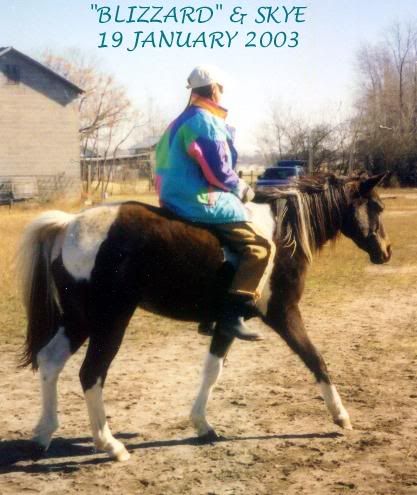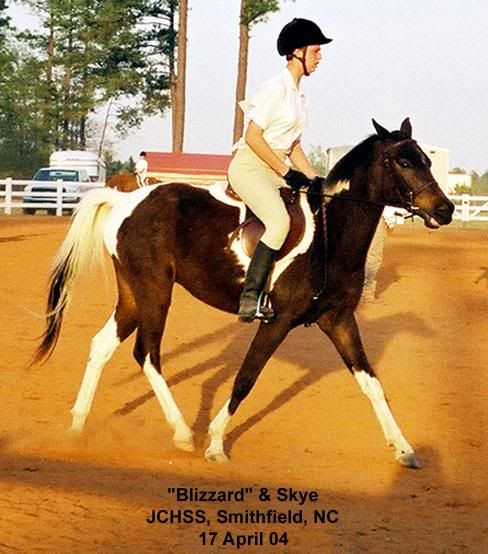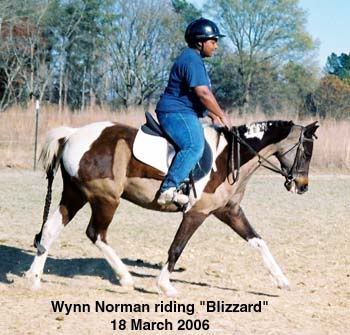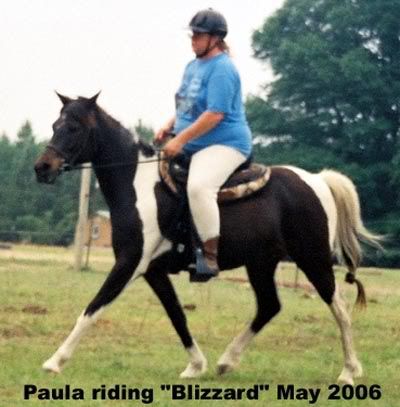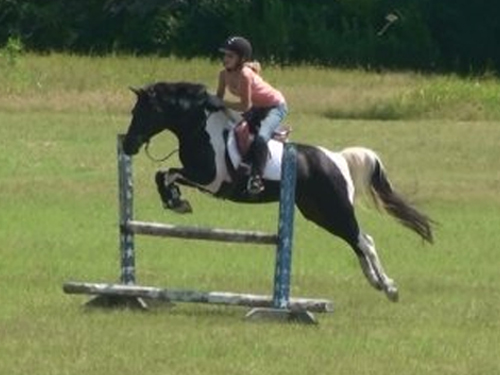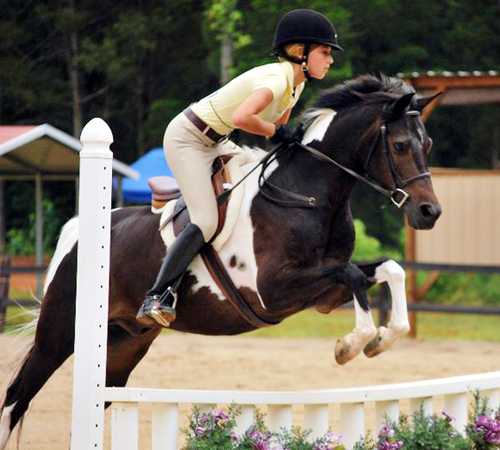The wonders of ponies! What AAARRRREEEE they thinking? Oh, yea - "Situation normal - time to think of new suicide game..."
Glad you were there and that he is OK. Those wounds can take a while to heal...
Ours weren't so much puncture type but a ripped opening down the whole leg from knee to fetlock - colt standing on gate, hooves slipped off and he caught an "edge" (on a round, steel pipe, heavy duty gate) on the way down - literally looked just like a letter opener opening his leg in front of our eyes. It was December and the daily scrubbing and hosing/soaking was miserable even here in NC. You could see his cannon, splint bones and tendons as we worked on that injury. He was never stitched shut - but was kept wrapped as it healed from inside out. He healed and was started in ground work/harness. Less than 6 months after the 1st injury - he did almost the same exact injury on his other foreleg. We weren't there and didn't see it happen and never did find any hair, bent panels, new dents that indicated where he'd done it. The care was pretty much identical except we were now dealing with flies and gnats. Again, he healed. To this day, he still has very faint scars on his white legs (he's a dark bay tobiano - 1/2 arab-1/2 shet) and the first time his legs were clipped by his new owners, I got a call asking what kind of surgery he'd had! I sent them back to the "book" w/ pics and notes that went with him, his registration papers, coggins, health records etc and told them to re-read what I'd already told them about when I sold him to them... They were in shock, but OK after that ...

With both injuries, he never took a lame step (I would have!!) and he went right into jumping (soundly) at maturity!!
I've tried some different ideas for panel type pens - always go back to the plain old panels. Personally, the way those panels were tightly chained together, you'd never think what did happen, could. Those pvc/plastic type panel covers can be just as dangerous themselves as leaving the panels open between - some extreme weather causes them to degrade, sometimes in less than a year. They shatter with jagged edges - just like a pvc board fence can/will. We created wood in a similar bridge and had a full size (1200 lbs) horse get injured on that in the 70s - while being worked on a lounge line in the round pen...
Over the years, dealing with livestock and horses in many fence configurations, riding along with vets to many different farms and going to breed open houses in different states/breeds of horses, I've seen some interesting (and graphically nasty) injuries. Some never were figured out as to how/what the horse actually did to create his injury - w/ little to no discernible damage to fencing, barn or wall(s). Others were felt they were very minor injuries - should have healed quickly and easily - only to walk out 48 hours after an injury to a dead/dying horse. I have had vets tell me there was NO WAY to treat an injured horse - expense, time for us to clean/care for injury, healing ability of horse - only to put my own foot down, say we'll deal & w/i 4 months have a horse right back into either riding or production that the vet swore wouldn't live thru the first night or absolutely needed to be euthanized.
I read thru all the other posts on that 2012 thread with interest. Sure wish some folks had taken pics of the different ways they used to protect their fencing and horses. I can't quite visualize some of what the posters did - though sure sounds good!
Amysue - let us know how Turbo is doing!!







































